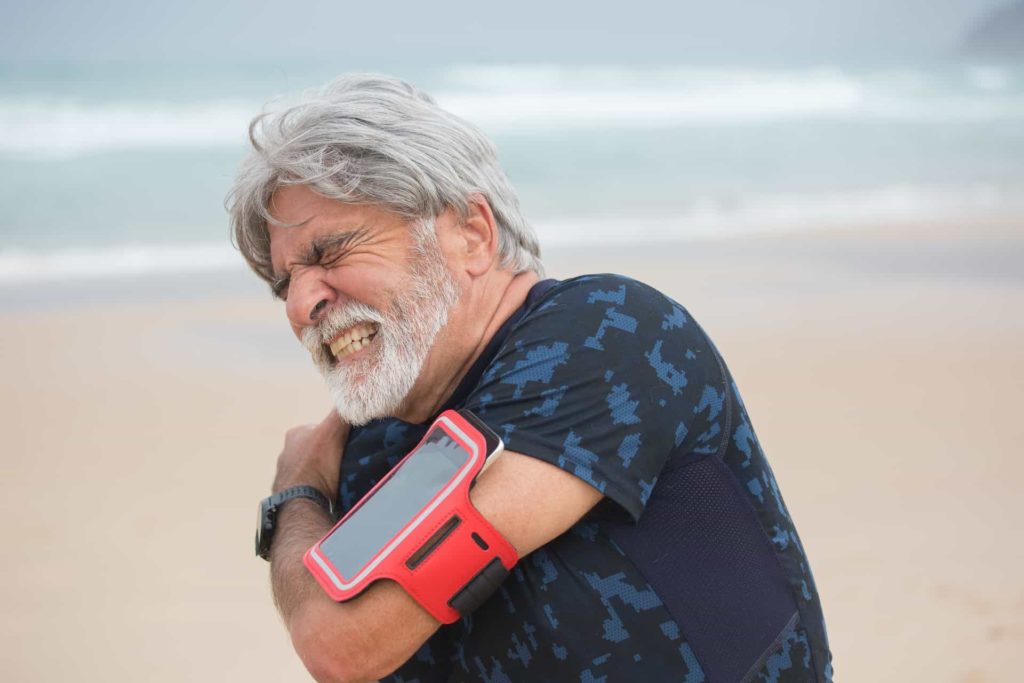
Unfortunately, many people worldwide live with musculoskeletal pain in their bones, muscles, joints, ligaments, and tendons. Many of them also regularly ignore the pain they experience as if it’s normal. However, the various forms of musculoskeletal pain that people experience can quickly become debilitating medical conditions that produce life-altering effects if they’re not treated correctly and promptly.
In the following article, our medical experts from OptiMed Hospitalists will explore the critical details that people should understand about scapular pain in particular, along with the spasms and radiating discomfort it can produce. Please continue to learn about the issue and consider exploring our selection of educational resources for information on other key healthcare topics.
Related: How Healthy is America Compared to Other Countries?
What is Scapular Pain?
In short, scapular pain is an aching, sharp pain that radiates from between the shoulder blades and can significantly interfere with people’s daily lives. It can also manifest as upper back pain typically caused by overuse of muscles or injuries. Over 90.4% of office workers deal with scapular pain, and between 6.7% to 66.7% of people with scapular pain deal with it for life.
Thankfully, less severe scapular pain can generally be treated with minimal medical intervention, like physical therapy, NSAIDs, rest, ice, compression, and elevation. However, more severe pain is usually treated with surgery to provide patients with some relief, though the pain may never completely disappear once it becomes severe enough that surgery is warranted.
People need to note that there are multiple types of scapular pain that they can experience. Below, we’ll explore the two primary kinds of scapular pain that people typically contend with, how they’re treated, and how people can actively try to prevent them.
What is a Rhomboid Spasm?

The rhomboid muscles are a collection of large muscles located in the upper back and are made to connect the ribs and spine to the shoulder blade. When these muscles are pulled wrong, overworked, or otherwise injured, they can experience spasms throughout the upper back and shoulders, alongside;
- Aching or shooting pain
- Tightness or stiffness
- Punching
- Numbness and tingling
- Pins and needles
Rhomboid spasms can also cause a range of clicking or popping sounds and may even make it painful for people to breathe regularly. They’re often caused by overuse of the arms and shoulders, especially during repetitive overhead activities (usually related to sports) or prolonged computer usage.
Is your hospital, assisted living facility, or nursing home eager to rewrite its healthcare story by adopting a new approach to relationship-based medicine that can help you better manage your patient care? Contact our team of medical specialists at OptiMed Hospitalists today to learn how we can help.
Rhomboid Spasm Treatment Options
Mild rhomboid spasms can heal in a few weeks, though more serious ones caused by strains, injuries, or tears in the muscle can take much longer. Some effective treatment methods include;
- Icing the shoulder
- Alternating between heating and ice packs
- Over the counter pain relievers
- Topical pain creams
- Gentle stretches
- Sitting up straight
- Keeping your arm and shoulder down
- Gentle massage
How to Prevent Rhomboid Spasms
You can take active measures to prevent developing a rhomboid spasm by utilizing some practical exercises meant to work your rhomboid muscles.
- Sit down in a chair and plant your feet on the floor. Lift your right leg to put your ankle on your left knee. Gently grasp your right ankle using your right hand, and put your right elbow on your right knee. Use your left hand to grab the chair behind your back and twist your torso slowly to the left to look at your left hand.
- Sit down on the floor and stretch out your legs in front of you, and bend your night knee. Put your right foot on the outside of your left knee (over the leg). Use your right hand to grab and hold your right ankle, and lean back.
- Stand up straight while keeping your arms at your sides, and stretch one arm across your body while pulling it towards yourself with your other hand.
Related: Artificial Intelligence in Healthcare
What is Scapular Dyskinesis?

In short, scapular dyskinesis is the improper movement of the scapula during regular shoulder movements, and it’s an often overlooked cause of significant pain and dysfunction within the upper back and shoulders. Also called SICK scapula syndrome, the condition develops due to a deviation in the active or resting position of the scapula. It typically causes a range of notable symptoms and signs, including;
- Loss of strength with arm or shoulder use
- Tenderness and pain around the scapula
- Wringing in the scapula
- Popping or snapping sensations around the scapula with shoulder movement
- Instability of the shoulder
- Asymmetrical posture
Scapular Dyskinesis Treatment Options
Scapular dyskinesis is typically treated by an athletic trainer or a qualified physical therapist through physical therapy and rehabilitation. Depending on how bad the scapular dyskinesis is, treatment will usually last four to eight weeks. The goal is to help strengthen the necessary muscles in your shoulders while gradually and gently restoring your overall range of motion. A doctor may also recommend using heat and ice to address aches, pain, and anti-inflammatory medication.
Related: The Dangers of Taking Expired Medication
How to Prevent Scapular Dyskinesis
To help prevent scapular dyskinesis, always go through a proper warm-up before doing any overhand activities, including stretching and throwing. If you practice sports like baseball or softball, also be sure to obey proper age and league pitch guidelines.
Final Thoughts to Keep in Mind
Our dedicated medical professionals from OptiMed Hospitalists hope that the article above has helped you better understand the nature of scapular pain and how you can address its effects in your life to improve your daily functioning. Please consider exploring our website for more information. Also, feel free to contact us today to learn more about our array of specialized services available in your area. Are you eager to hire a new team of engaged, trustworthy, innovative, and committed healthcare professionals to care for the patients at your hospital, nursing home, or assisted living facility? Our team of expertly trained medical professionals at OptiMed Hospitalists is here to help, so consider contacting us today.
